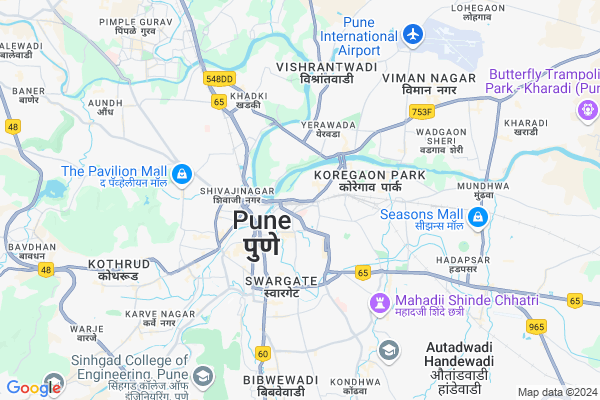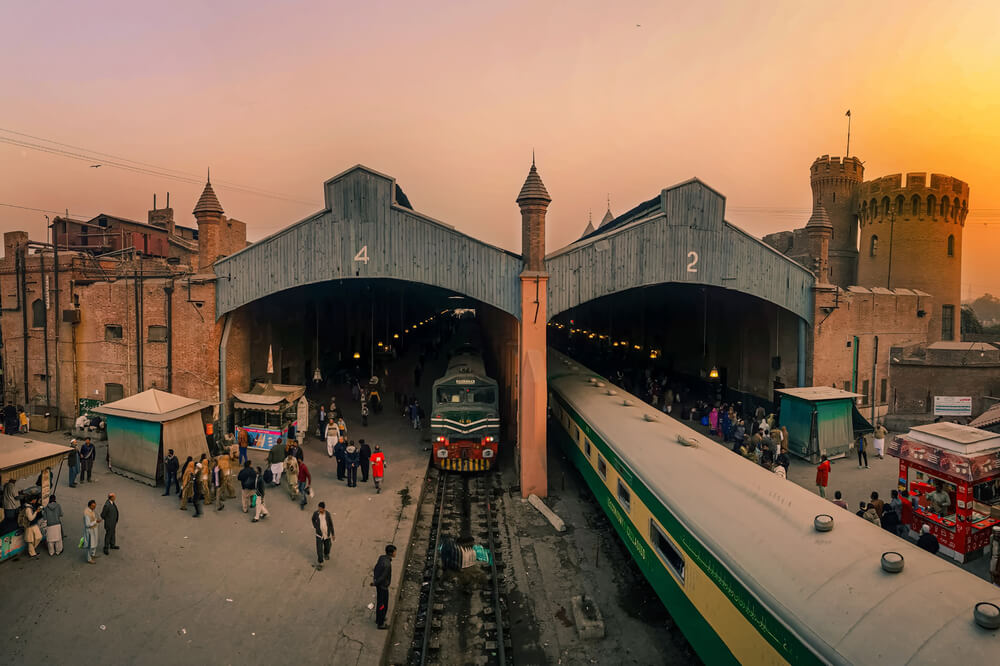Indian Railways is one of the largest and busiest railway networks in the world, connecting cities, towns, and villages across the country. Whether you’re a daily commuter or a traveler exploring a new destination, understanding the map of an Indian railway station area can make your journey much more manageable.
A railway station map helps you find platforms, waiting areas, ticket counters, restrooms, exits, and nearby transport options like buses, metros, and taxis. Large stations can be confusing, especially for first-time visitors, but with the correct map, you can navigate them quickly and comfortably.
What is a Map of an Indian Railway Station Area?
A detailed map of an Indian railway station area shows the different parts of the station. It helps passengers find essential locations such as platforms, ticket counters, waiting halls, restrooms, entry and exit gates, footbridges, escalators, and nearby transport options such as buses, metros, and taxis.
These maps are designed to facilitate navigation, especially in large and busy railway stations. They can be found on IRCTC websites, railway apps, Google Maps, digital display boards at stations, and physical signboards. By using these maps, travelers can plan their movements efficiently, saving time and avoiding confusion.
Why is a Railway Station Area Map Important?
A railway station area map is essential because it helps passengers navigate the station quickly and efficiently. Indian railway stations, preeminent ones like New Delhi, Mumbai CST, and Howrah Junction, are large and can be confusing for travelers. Having a map ensures that passengers can find essential services without hassle.
Key Benefits of a Railway Station Map:
✅ Saves Time – Helps locate platforms, ticket counters, and exits quickly.
✅ Reduces Confusion – Prevents last-minute rush by showing the exact layout of the station.
✅ Improves Accessibility – Assists senior citizens and differently-abled passengers in finding lifts, ramps, and waiting areas.
✅ Helps with Transport Connectivity: It shows nearby metro stations, bus stops, and taxi stands for easy onward travel.
✅ Ensures Safety: In case of an emergency, Guides travelers to emergency exits, first-aid centers, and police booths.
Whether you’re a daily commuter or a long-distance traveler, a railway station map can make your journey smooth, stress-free, and well-organized

How to Access Indian Railway Station Maps?
Indian Railways provides multiple ways to access station area maps:
- IRCTC Website & Railways Official App: Many major railway stations have interactive maps available on the IRCTC website or mobile app.
- Google Maps Integration: Some railway stations are mapped with platform numbers, exits, and amenities on Google Maps.
- Railway Enquiry Counters: You can also get a physical station map at help desks.
- Digital Display Boards: Major stations like New Delhi, Mumbai CST, Chennai Central, and Howrah have electronic station layout maps.
Step-by-Step Guide to Using a Railway Station Area Map
Using a railway station area map can make your travel experience easier and more organized. Here’s a simple step-by-step guide to help you navigate an Indian railway station efficiently.
Step 1: Identify Your Arrival or Departure Station
- Check your train ticket or IRCTC booking details to confirm your departure or arrival station name.
- Major railway stations often have multiple entrances and exits, so knowing your station in advance helps.
Step 2: Find a Railway Station Map
- Online: Visit the IRCTC website or Google Maps to access station layouts.
- Mobile Apps: Use railway apps like Where is My Train or the NTES (National Train Enquiry System) app.
- At the Station: Look for digital display boards or physical signboards near entry gates and waiting areas.
Step 3: Locate Your Platform
- Check the platform number mentioned on your train ticket or railway display screens.
- Follow the signboards or use the station map to find the shortest route to your platform.
- If your platform is far, look for footbridges, escalators, or subway passages for easy access.
Step 4: Find Essential Services
- Locate critical facilities such as:
- Ticket Counters – For booking or inquiries.
- Waiting Halls & Lounges – If you have extra time before your train.
- Restrooms & Drinking Water – For necessities.
- Food Courts & Stalls – If you need snacks or meals.
- Medical Aid & Help Desks – For any emergency assistance.
Step 5: Identify the Entry & Exit Gates
- If you’re arriving at a station, check the map for the nearest exit to your next transport mode (bus, metro, taxi).
- If you’re departing, find the best entrance to reach your platform faster.
Step 6: Check Nearby Transport Options
- Use the station map to find:
- Metro stations (if available) are available for quick city transit.
- Prepaid Taxi Stands & Auto-Rickshaws for hassle-free travel.
- Bus Stops for economical transport options.
Step 7: Follow Signboards & Announcements
- Always cross-check information on digital boards, station announcements, and railway maps for last-minute platform or train changes.
By following this step-by-step guide, you can navigate any Indian railway station easily, save time, and have a stress-free journey.
How to Use a Railway Station Map Effectively?
🔹 Check platform numbers in advance to avoid last-minute rush.
🔹 Use station signboards to locate foot overbridges and escalators.
🔹 Follow station maps for easy navigation, especially in big junctions.
🔹 Look for digital kiosks at major railway stations for updated information.
Common FAQs About Railway Station Area Maps
Where can I find a map of the railway station area?
You can find railway station maps on:
✅ IRCTC Website & Railway Apps (like NTES, Where is My Train)
✅ Google Maps (for major stations)
✅ Digital Display Boards inside stations
✅ Physical Signboards near entry gates and waiting halls
How can a railway station map help me?
A railway station map helps you:
✔ Locate platforms, ticket counters, and waiting areas
✔ Find restrooms, food stalls, and exit gates
✔ Identify footbridges, escalators, and subways for easy movement
✔ Check nearby metro stations, taxis, and bus stops
How do I find my platform using the map?
- Check your train ticket or digital display boards for the platform number.
- Follow the station map to locate the shortest route to your platform.
- Use footbridges or escalators if your platform is far away.
Are railway station maps available for all stations?
Not all major railway stations, but most, such as New Delhi, Mumbai CST, Howrah, and Chennai Central, have detailed maps. Smaller stations may have basic signboards instead.
What should I do if I can’t find the station map?
If you can’t find a map, you can:
- Ask at the railway inquiry counter for directions.
- Check Google Maps for station layouts.
- Follow signboards inside the station.
Are there mobile apps that show railway station maps?
Yes! Some helpful apps include:
📱 IRCTC Rail Connect – Official railway app
📱 Where is My Train – Live train tracking & station details
📱 NTES (National Train Enquiry System) – Train & platform info
Can I find food stalls and waiting rooms using a station map?
Yes! Most railway station maps show:
🍛 Food courts & snack stalls
🛋 Waiting lounges & rest areas
🚻 Restrooms & drinking water stations
How do I find taxis, buses, or metro stations from the railway station?
- Use the station map to check exit gates leading to taxis, autos, and buses.
- Look for signboards or ask at the help desk.
- Use apps like Google Maps to find nearby transport options.
What if I need medical help at a railway station?
- Station maps show the location of first-aid centers and railway hospitals.
- You can also contact the station manager or railway police for emergencies.
Do all railway stations have digital display maps?
No, only major railway stations have digital display boards with maps. Smaller stations usually have printed maps or signboards.
Conclusion
A railway station area map is a valuable tool for helping passengers navigate the station quickly and find platforms, ticket counters, restrooms, and transport options. Whether you’re a daily commuter or a traveler, using a map can save time, reduce confusion, and make your journey stress-free.
You can find station maps online, in railway apps, on Google Maps, or at the station itself. If you ever feel lost, just follow signboards, ask railway staff, or check digital display boards. With the correct map, your travel experience will be smooth and hassle-free!
